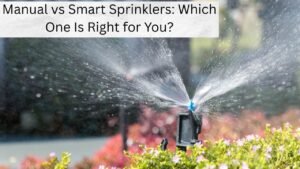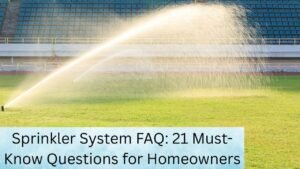Did you know that valve box flooding can lead to significant property damage and environmental issues? In Wichita alone, thousands of homeowners face the frustration of flooded valve boxes every year. Understanding the causes and solutions for this problem is crucial for maintaining both your landscape and the environment.
The Problem: Valve Box Flooding
Valve boxes protect one of the most crucial parts of your irrigation system—the valves that regulate flow across different sprinkler zones. But once water starts pooling in there? You’re not just dealing with a puddle—you’re risking electrical shorts, valve failures, and corrosion that can throw your whole system off.
This often shows up as zones not turning on or off properly. Before you dig up your lawn, learn how to diagnose sprinkler valves that won’t open—it’s often the first sign of hidden flooding in the valve box.
The Role of Soil: More Than Just Drainage

Soil texture significantly impacts how water interacts with the ground.
Here’s a closer look:
- Sandy Soil: Typically offers excellent drainage by allowing water to flow through quickly. However, during heavy rains or rapid snowmelt, sandy soil may become saturated if it’s unable to keep up with the volume of water.
- Clay Soil: Known for its ability to retain water but poor drainage capabilities. This can result in water pooling and increased flood risk around valve boxes.
- Silty Soil: Holds more moisture than sandy soil but less than clay. It generally provides better drainage than clay but can still contribute to flooding if the soil becomes compacted.
Understanding Soil Permeability: Soil permeability, or the ease with which water passes through the soil, varies by type. Even soils with high permeability, like sandy loam, can experience flooding under certain conditions, such as intense rainfall or excessive snowmelt.
Exploring Wichita’s Drainage Systems
Wichita’s drainage infrastructure is designed to manage stormwater runoff and groundwater levels but faces specific challenges:
- Aging Infrastructure: Some parts of the city’s drainage system are outdated, struggling to meet current demands and manage increased rainfall.
- Heavy Rainfall Events: Wichita often experiences intense rainfalls and rapid snowmelt, which can overwhelm the drainage system and lead to localized flooding.
- Urbanization: The city’s growth increases impervious surfaces, like roads and buildings, reducing natural water absorption and placing extra stress on the drainage infrastructure.
Recent Improvements: Wichita has been working on updating and expanding its drainage systems. Understanding these limitations helps homeowners anticipate and manage potential flooding around valve boxes more effectively.
Solutions and Prevention Strategies
1. Check Wiring & Seals: Flooded boxes often corrode connectors or short the solenoids. Use waterproof splice kits, and inspect for sprinkler wiring issues if a zone stops responding.
2. Proper Grading: Ensure landscaping around valve boxes directs water away from these areas. Proper grading techniques can prevent water from pooling and reduce flood risk.
3. Soil Amendments: Improve soil drainage by mixing in sand or organic matter. This enhances the soil’s ability to handle excess water and reduces flooding risk.
4. Alternative Drainage Methods: Consider installing French drains, rain gardens, or catch basins. These systems can efficiently manage excess water and mitigate flooding around valve boxes.
5. Monitor Weather Patterns: Stay informed about weather conditions and plan for extreme events. Implementing preventative measures before heavy rains or snowmelt can help manage flooding risks.
Environmental Impact of Valve Box Flooding
Valve box flooding can have several environmental consequences:
- Contaminated Runoff: Flooded valve boxes can lead to runoff carrying pollutants into local waterways, harming aquatic life and degrading water quality.
- Erosion: Excess water can cause soil erosion, destabilizing landscapes and leading to soil loss, which can affect plant growth and the stability of surrounding areas.
- Property Damage: Prolonged flooding can damage surrounding infrastructure, plant life, and even lead to costly repairs.
Addressing valve box flooding not only protects your property but also helps preserve the environment.
Frequently Asked Questions
Conclusion
Valve box flooding is a common issue influenced by soil composition, drainage systems, and local weather patterns. By understanding these factors and implementing effective solutions, homeowners can manage and prevent flooding effectively. Regular maintenance, proper grading, and advanced drainage methods are key to maintaining a healthy and efficient irrigation system.
For personalized advice and expert sprinkler repair services in Wichita, KS, you may contact us. We can provide specific insights and solutions to keep your valve boxes functioning properly and your landscape in top condition.





